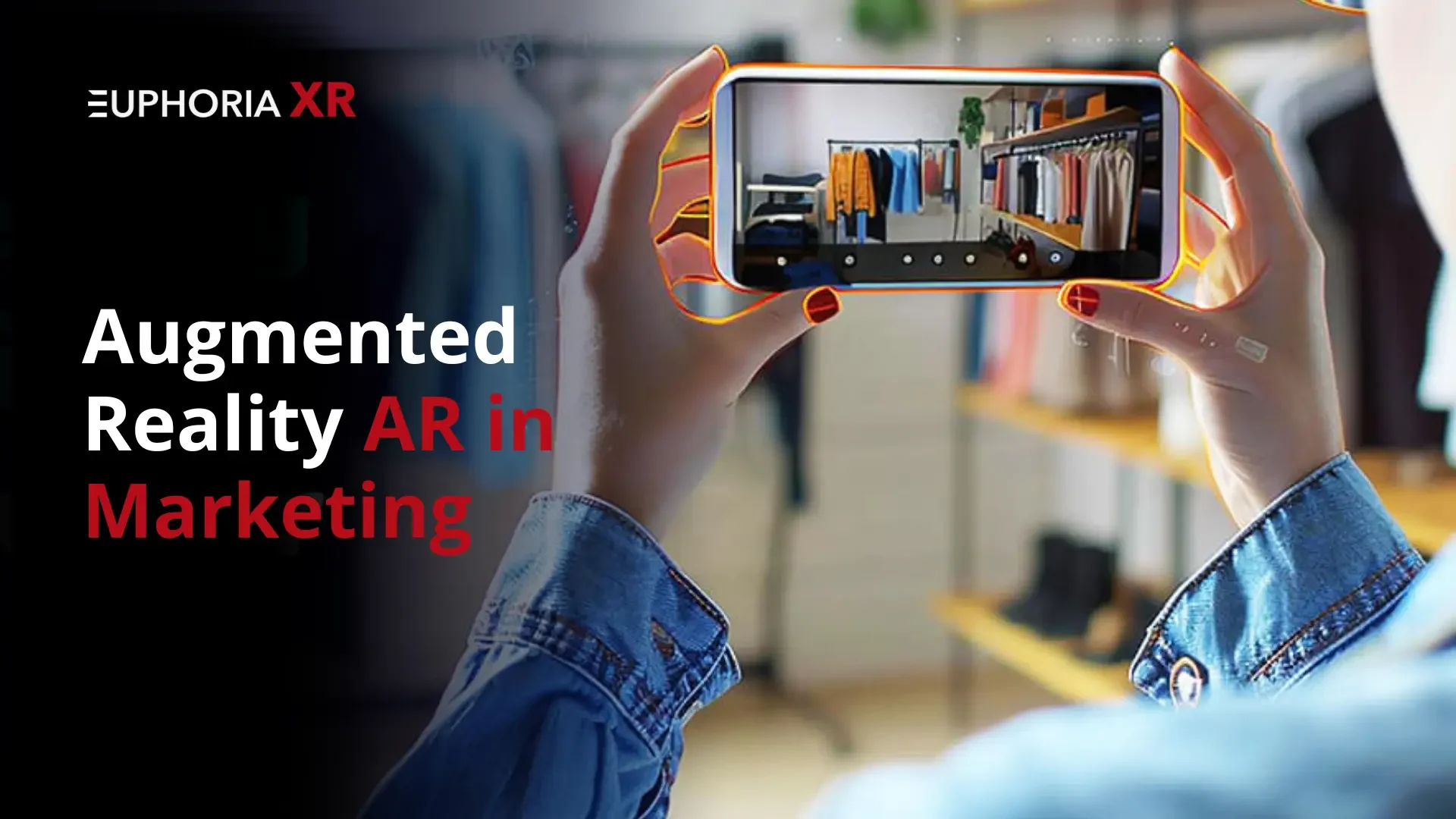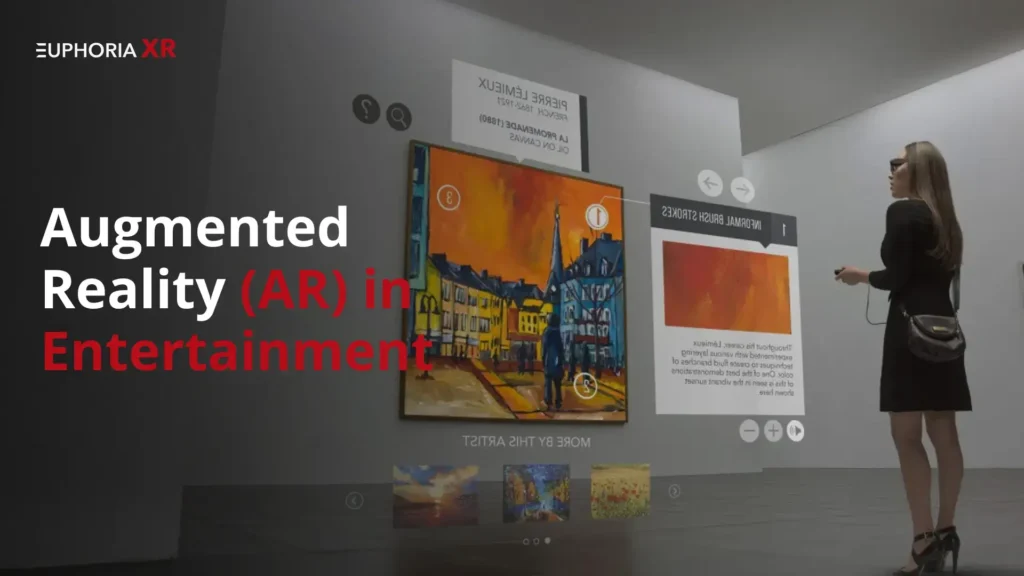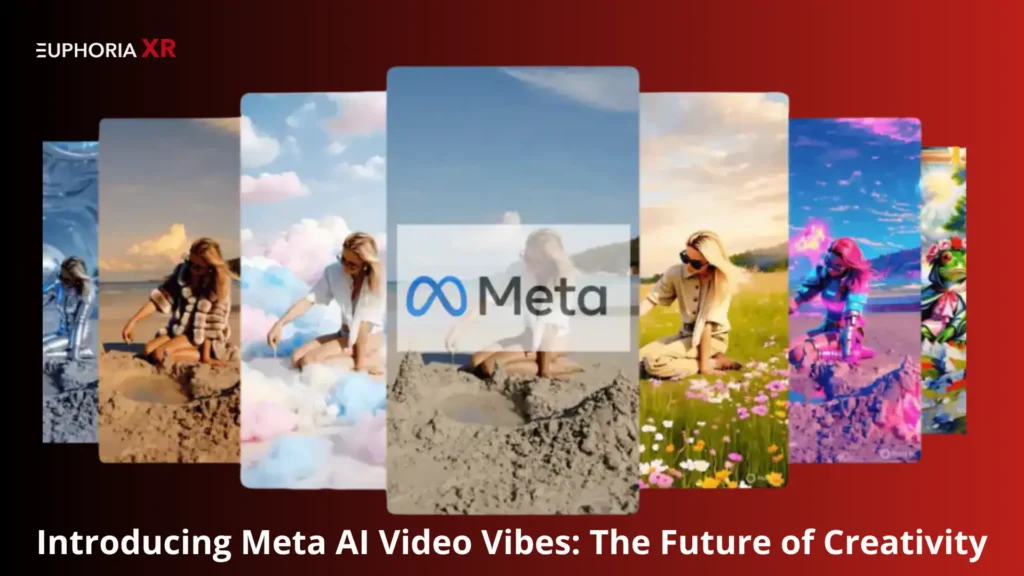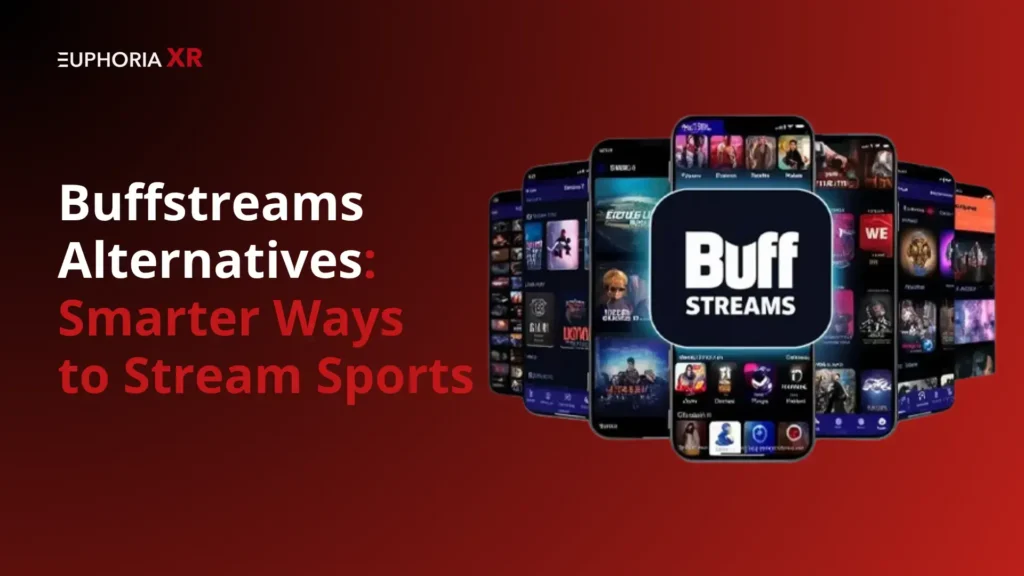How do you stand out as a highly competitive and diverse marketer? How do you make a lasting impact?
The answer often comes from embracing innovation.
One technology that is proving to be a game-changer is augmented reality. AR is becoming an essential tool for marketing because it allows brands to create immersive and interactive experiences for their audience. By blending digital elements into the real world, AR in marketing helps businesses capture attention and connect with consumers more engagingly. In this blog, we’ll explore how AR can increase brand engagement and dive into some effective AR marketing strategies.
What is AR in Marketing?
AR combines real-world environments with computer-generated content such as 3D models, animations, or other digital elements. Unlike virtual reality, which creates a fully digital experience, AR overlays digital information onto the user’s view of the physical world. This makes it a highly engaging and practical tool for marketers.
For instance, retailers use AR to let customers see how furniture would look in their homes or try on makeup virtually before buying. These experiences create a strong connection between customers and brands by offering more personalized and interactive shopping methods.
Did you know? The augmented reality (AR) market is expected to grow significantly, reaching an estimated $88.4 billion by 2026, with a compound annual growth rate (CAGR) of 35%? This growth spans various industries, including commercial and healthcare sectors. Source: MarketsandMarkets
|
What Are the Benefits of Augmented Reality in Marketing?
Using AR in marketing can initially seem incredible, but is it truly effective? Does augmented reality offer advantages over traditional marketing methods?
Let’s find out three specific benefits of augmented reality in marketing.
1. Generating Excitement
One of the biggest reasons to adopt augmented reality marketing is its ability to create buzz.
With an AR marketing strategy, you can attract attention to your business and products freshly and interactively. This makes it an excellent tool for gaining customers or promoting new products. AR technology adds an entertainment factor that traditional marketing can’t match, giving people something unique to talk about.
Think of it like Super Bowl commercials: while the exposure is important, the goal is to generate excitement and conversation. This kind of buzz can significantly impact your business success.
2. Maximizing Resource Efficiency
AR can also contribute to resource efficiency. For instance, by incorporating AR elements like QR codes, a single business card can become a dynamic tool providing detailed information about your business.
Another great advantage is that AR can integrate with your existing digital assets, eliminating the need to develop AR technology from scratch. This allows you to engage with customers in new ways without incurring extra costs, effectively maximizing the value of your current resources.
3. Enhancing Customer Satisfaction
Statistics show that 61% of consumers prefer brands that offer AR brand experiences. This is because AR allows customers to interact with products before purchasing. For example, if someone can try on clothes virtually, they’re less likely to make a return because they already know if the item fits and suits them.
This not only saves costs by reducing returns but also improves customer satisfaction. Given the choice between two online stores, one with AR try-ons and one without, customers will likely choose the store that offers the more immersive experience.
Looking to partner with an Augmented Reality development company?
Key AR Marketing Strategies for Boosting Engagement
To maximize the benefits of AR, brands are developing innovative ways to incorporate it into their marketing efforts. Here are some actionable AR marketing strategies that can help increase customer engagement:
1. Virtual Try-Ons
One of the most effective applications of AR in marketing is virtual try-ons. Fashion, beauty, and accessory brands allow customers to “try on” products using their mobile devices. For example, brands like Sephora offer AR apps that let users see how different lipstick shades or eyeshadows will look on their faces. This creates a fun, interactive experience while reducing the uncertainty associated with online shopping.
2. AR-Interactive Packaging
AR can turn something as simple as product packaging into a powerful marketing tool. By scanning packaging with their smartphones, consumers can access additional content such as games, videos, or promotions. This not only makes the product more engaging but also encourages repeat purchases. Pepsi and other brands have successfully used AR packaging to create deeper customer engagement.
3. AR Product Visualization
AR can visualize products in real-life spaces for larger purchases, such as furniture or home decor. Apps like IKEA Place allow customers to see how furniture will look in their homes before purchasing. This enhances the shopping experience and helps customers feel more confident in their decisions, ultimately driving more conversions.
4. Gamification and AR
Gamification is a great way to encourage interaction with your brand, and AR adds an extra layer of immersion to these experiences. Brands can create AR-based games or challenges with rewards, discounts, or exclusive content. For example, Nike has used AR to let users try on sneakers and earn points for interacting with the brand. This type of engagement keeps users coming back and helps build long-term brand loyalty.
5. Social Media AR Filters
AR filters on platforms like Instagram and Snapchat have become popular for brands to engage with consumers. Often, branded filters allow users to interact with digital elements and share the experience with their social networks. This generates organic content and brand awareness as users spread the word to their followers.
6. Location-Based AR Experiences
AR can also be used to create interactive experiences tied to specific locations. For instance, brands can set up AR experiences to encourage users to visit physical stores or landmarks. Location-based AR scavenger hunts or virtual tours can drive foot traffic and create a memorable brand experience.
How to Incorporate AR Technology into Marketing
AR is an exciting innovation, but how can you effectively integrate it into your marketing efforts? Here are a few standout examples of how businesses are using AR to enhance their advertising:
1. QR Codes
You’ve likely encountered QR codes at some point, perhaps at a restaurant, where scanning the code opens a digital menu on your phone. While this interaction doesn’t use AR, augmented reality technology can be layered onto the experience for added engagement.
For instance, placing a QR code on a business card, advertisement, or any other printed material allows users to access digital content by scanning it. Once scanned, the code can trigger an AR experience that blends virtual elements with the real world seen through the phone’s camera.
Imagine a billboard with a QR code that, when scanned, launches an AR component on the user’s phone. They might see a virtual character interacting with their surroundings. In a more practical application, a QR code on a brochure could bring up interactive maps or additional product details, making printed material more engaging and informative.
AR in digital marketing opens up countless opportunities, especially with social media platforms.
Make your business card unforgettable with our WebAR Business Card Services. Scan to reveal interactive 3D content, videos, and links—an innovative way to showcase your brand and leave a lasting impression.
2. Virtual Try-Ons
Virtual try-ons are one of AR marketing strategies’ most straightforward and impactful uses.
Consider an online clothing store where customers can’t physically try on garments before buying. AR can solve this issue by allowing users to see how items would look on them through their smartphones. Using the phone’s camera and AR technology, shoppers can try on outfits virtually, making it easier to make purchasing decisions.
This concept extends beyond fashion. With AR, customers can preview how furniture might look in their living room, visualize paint colors on their walls, or see how new appliances would fit in their kitchen—all before making a purchase.
3. Experiential Marketing
AR shines brightest when used in experiential marketing, where creativity takes center stage.
Think back to the popularity of Pokémon Go, a mobile game that merged AR with the real world to engage users. Brands can use similar approaches to create fun, interactive AR experiences that promote their products or services memorably.
For example, you could develop an AR app that offers users a unique interaction with your brand, whether it’s through virtual mascots, a digital concert with animated characters, or a playful AR game. The goal is to offer something new and exciting, driving engagement and creating lasting brand impressions.
By using AR in marketing, businesses can elevate their advertising efforts, creating augmented reality brand experiences that capture attention and drive customer engagement and satisfaction.
AR Marketing Redefined by Euphoria XROne of our recent projects, Poke XR, showcases the potential of combining AR and AI to create unique digital experiences. We developed this social AR app using our BGR Assist Tool, which segments human subjects in a video without needing a green screen. Poke XR allows users to project holograms into the real world through augmented reality, offering an engaging and immersive way to interact with digital content. This tool has proven particularly useful in media production and podcasts, as it processes high-quality videos quickly, enabling seamless integration into various AR environments. |
Real-World Examples of AR in Marketing
1. L’Oréal’s AR Makeup Try-On
L’Oréal has developed an AR-powered app allowing customers to try makeup virtually. The app lets users see how different products look on their faces, helping them make more informed purchase decisions. This interactive feature has increased online sales and customer satisfaction.
2. IKEA’s AR Shopping App
IKEA’s AR app, IKEA Place, lets users place digital versions of furniture in their homes to see how it fits within their space. This feature makes shopping for home goods more interactive and reduces the guesswork that often comes with online furniture shopping.
3. Pepsi’s Interactive AR Packaging
Pepsi introduced AR experiences through its packaging, allowing consumers to unlock games, videos, and other content by scanning the product. This strategy kept customers engaged with the brand beyond the initial purchase, creating a memorable experience that encouraged future interactions.
Suggested Read: 15 Examples of Augmented Reality Brand Experiences
The Future of AR in Marketing
As AR technology continues to evolve, its role in marketing will only expand. In the future, we can expect more personalized and interactive experiences, with AR being used to create new ways for brands to connect with customers. Whether through hyper-realistic virtual shopping or AI-driven AR experiences, the possibilities for enhancing brand engagement with AR are limitless.
Final Thoughts!
AR in marketing offers brands a powerful way to engage with consumers on a deeper level. By creating interactive, personalized experiences, AR can significantly increase brand engagement and build lasting customer relationships. Whether through virtual try-ons, interactive packaging, or gamified experiences, augmented reality quickly becomes essential to any successful marketing strategy.
Discover how to build your brand’s unique voice, design an eye-catching website, and create engaging content with the support of our AR solutions.















